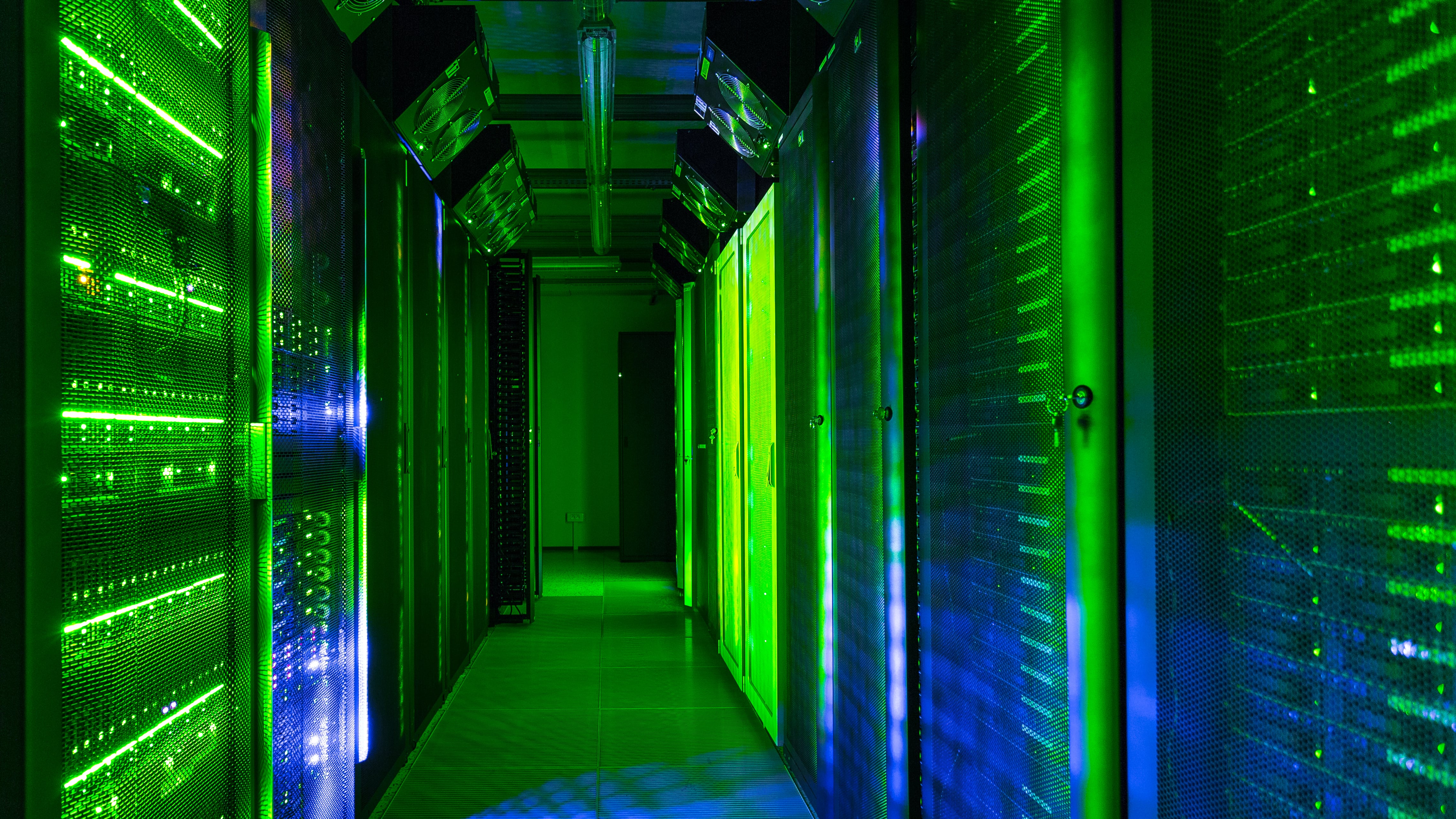
Digitalization permeates almost every area of life. The data centers in which the necessary data and applications are stored and processed have thus become a central pillar of the critical infrastructure of modern societies – and thus also a decisive factor for the success of the energy transition.
It only takes a quick glance at the technical devices that are in our immediate environment, and it quickly becomes obvious that digitalisation now permeates our lives, whether it's social media, online banking, or navigation systems. And, as a result, it determines large parts of our private and professional everyday lives.
Less obvious are the processes behind it, the cloud storage, processing, and distribution of vast amounts of data. Although these facilities are largely hidden from our everyday view, they are fundamental to our society being able to use the diverse digital applications that are now so easily available to us.
If the data centers were to suddenly fail, our society would stagnate. There are countless examples of this: from hybrid working to research, and development to logistics, the list is indefinite.
Digital business models are booming
The social change associated with digitalization is taking place at a breathtaking pace. Much of what used to be purely physical now takes place digitally. For example, an IDC report predicts that companies whose business model is based on sound data will generate more than 25% of their revenue with digital products, services, or experiences by 2026. No wonder that digital business models are booming like never before - an unstoppable trend.
Blockchain technology, the Internet of Things or applications based on artificial intelligence is causing energy consumption to rise massively because they are producing increased data. Depending on how they are used, however, they also have enormous potential to further advance the development of society as a whole towards greater sustainability. This is only possible with high-performing, efficiently operating data centers.
EVP and GM, Data Centres and Asset Lifecycle, Iron Mountain.
Innovative solutions are needed
In order to cope with the increase in global data volumes, data centers have undergone enormous technological development in the past ten years. Never before have they been able to handle higher workloads. In turn, large parts of the IT workload of outdated corporate data centers have been outsourced to co-location spots or to cloud computing services. The response to the unchecked growth of data has been to process it more efficiently.
Sign up to the TechRadar Pro newsletter to get all the top news, opinion, features and guidance your business needs to succeed!
But the amount of data worldwide continues to increase. And because increasing amounts of data is landing on servers, the data centers need more and more electricity.
Even an improved Power Usage Effectiveness (PUE) through the relocation of company-owned equipment to larger, shared facilities cannot compensate for the simultaneous increase in global. The crucial question is therefore – how can we reconcile our hunger for energy with the energy transition? The answer is simple. New technologies and processes are needed to ensure in the future that the negative effects of digitalization do not outweigh the positive ones.
Focus on renewable energies
The direction is clear: data centers must become more efficient. This means more power but less power consumption. This is essential both for further digitization and for the success of the energy transition. How realistic this is is another matter. However, it has led to massive developments in processors, servers, and entire data centers. Large data centers have the energy requirements of a small to medium-sized city. Even small efficiency gains can bring big savings here.
The key to success is the increased use of renewable energies. Much of the electricity is to come from additionally developed energy sources such as wind power, solar energy or geothermal energy and be sold via virtual power purchase agreements (VPPA).
On the right track
What needs to be done is clear. The solutions are on the table. Now it is a question of implementing them. Some of the world's largest electricity consumers have already taken comprehensive measures to this end. Amazon, for example, is currently the largest consumer of renewable energy. Microsoft has pledged to become CO2 neutral by 2030 and to erase its entire carbon footprint since 1975 by 2050. Google, on the other hand, wants to go beyond the VPPAs and completely eliminate fossil fuels by 2030.
One presupposes the other
Of course, not all data centres are as climate-friendly as they should be - even though a host of many important measures have already been implemented or initiated. And electricity consumption will continue to rise due to the steadily growing volume of data worldwide. The good news is that there are numerous excellent approaches to using energy more resource-efficiently, they just need to be consistently developed and then implemented.
The opportunities that arise are worth the effort. Because as soon as data centers operate in a climate-neutral manner, they can unfold their true potential. Then they will contribute significantly to solving the central challenges of the future. By enabling the use of innovative digital technologies that help us make our world more sustainable and solve many other challenges of the future. The one conditions the other.
Mark Kidd, EVP and GM, Data Centres and Asset Lifecycle, Iron Mountain.